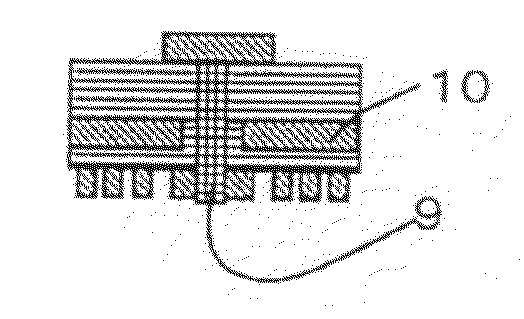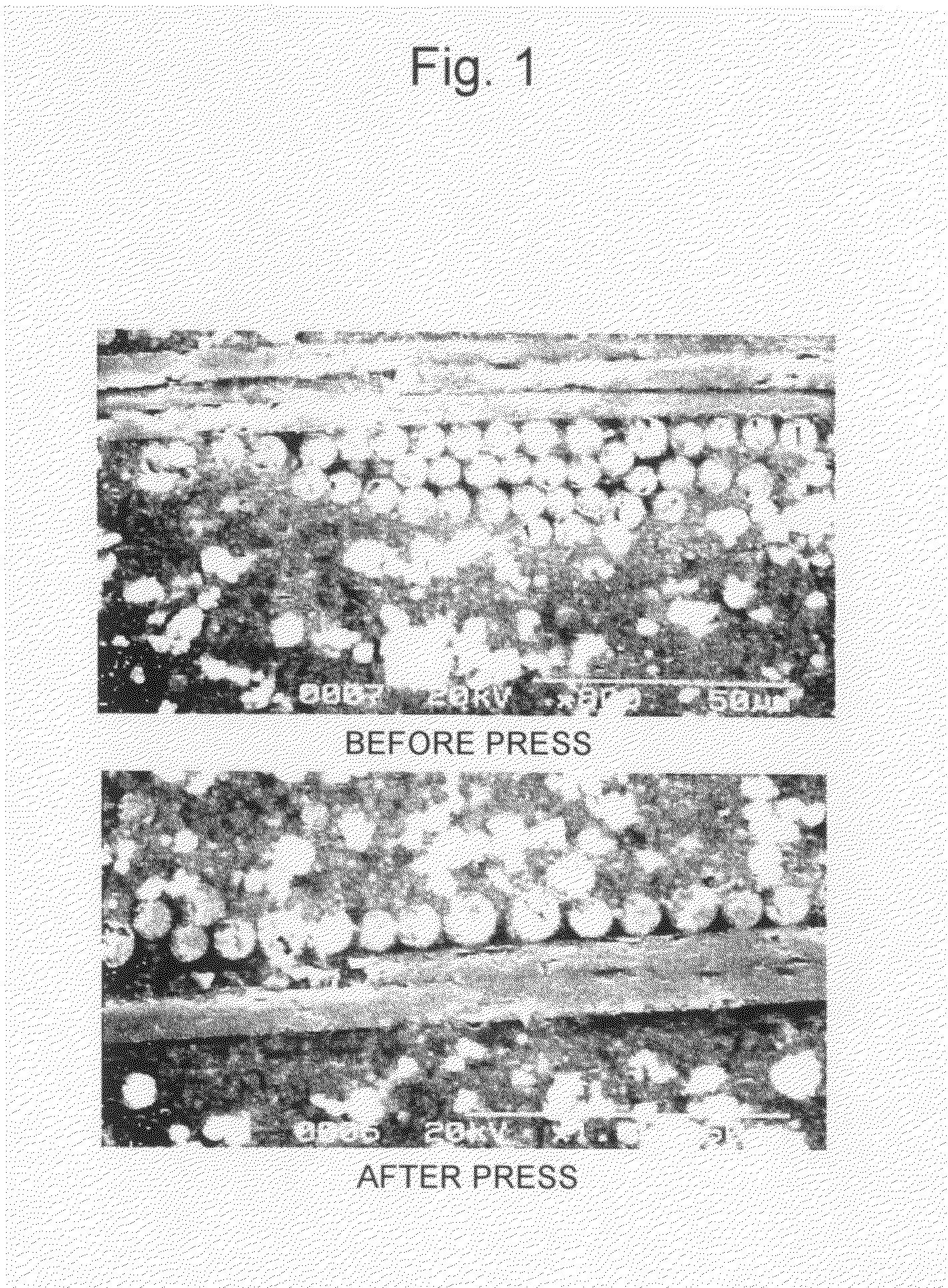Prepreg and printed wiring board using thin quartz glass cloth
a printed wiring board and quartz glass cloth technology, applied in the field of can solve the problems of insufficient base material, laminate, printed wiring boards and multi-layer printed wiring boards in their structures lack consideration of boring workability, and the dielectric loss tangent is larger than that of quartz glass cloths, so as to achieve low permittivity and low dielectric loss tangents. , the effect of loss
- Summary
- Abstract
- Description
- Claims
- Application Information
AI Technical Summary
Benefits of technology
Problems solved by technology
Method used
Image
Examples
example 1
[0064]Example 1 was an example of fabricating a laminate using the quartz glass cloth No. 1. The measurement results are shown in Table 2. Reducing the number of fibers constituting a quartz yarn to 20 fibers reduced the thickness of the quartz glass cloth to 20 μm and the weight per unit area thereof to 10 g / m2. Hence, it was confirmed that reducing the fiber number in a yarn and making the weaving density low without making the quartz glass fibers excessively fine could reduce the layer thickness and the weight of the quartz glass cloth. The prepreg having a resin composition content rate of 60% by weight had a thickness of 23 μm, but a laminated prepreg obtained by laminating and pressing 36 sheets of the original prepreg had a thickness of 590 μm, that is, an insulating layer thickness per layer of 16 μm, which indicated that the press work could further reduce the layer thickness. The permittivity and the dielectric loss tangent of the laminate at 10 GHz exhibited low values of...
example 2
[0065]Example 2 was an example of fabricating a laminate using the quartz glass cloth No. 2. The measurement results are shown in Table 2. Reducing the number of fibers constituting a quartz yarn to 40 fibers reduced the thickness of the quartz glass cloth to 21 μm and the weight per unit area thereof to 14 g / m2. Hence, it was confirmed that reducing the fiber number in a yarn and making the weaving density low without making the quartz glass fibers excessively fine could reduce the layer thickness and the weight of the quartz glass cloth. The prepreg having a resin composition content rate of 60% by weight had a thickness of 33 μm, but a laminated prepreg obtained by laminating and pressing 36 sheets of the original prepreg had a thickness of 688 μm, that is, an insulating layer thickness per layer of 19 μm, which indicated that the press work could further reduce the layer thickness. The permittivity and the dielectric loss tangent of the laminate at 10 GHz exhibited low values of...
examples 3 to 5
[0067]Examples 3 to 5 were examples of using the quartz glass cloth No. 2 and using prepregs whose content rates of the resin composition were varied. The measurement results are shown in Table 3. It was confirmed that the thermal expansion coefficient and also the dielectric loss tangent of the laminate decreased with the decreasing content rate of the resin composition. Hence, it was found that a laminate, printed wiring board and multilayer printed wiring board using the prepreg of the present invention are excellent in both the high-frequency properties and the low thermal expansion.
TABLE 3ReferenceMaterial nameProduct nameExampleExample 3Example 4Example 5Low molecular weightB300050polybutadieneHigh molecular weightRB81050polybutadieneCurable polyphenyleneOPE2St30etherMacromolecularH103120substance (rubbercomponent)Flame retardantSAYTEX8010190Silicon oxide fillerSO25R200Coupling agentKBM5031Polymerization initiatorPerhexyne 25B2Base materialQuartz glass cloth No.NoneNo. 2Base m...
PUM
| Property | Measurement | Unit |
|---|---|---|
| Temperature | aaaaa | aaaaa |
| Temperature | aaaaa | aaaaa |
| Length | aaaaa | aaaaa |
Abstract
Description
Claims
Application Information
 Login to View More
Login to View More - R&D
- Intellectual Property
- Life Sciences
- Materials
- Tech Scout
- Unparalleled Data Quality
- Higher Quality Content
- 60% Fewer Hallucinations
Browse by: Latest US Patents, China's latest patents, Technical Efficacy Thesaurus, Application Domain, Technology Topic, Popular Technical Reports.
© 2025 PatSnap. All rights reserved.Legal|Privacy policy|Modern Slavery Act Transparency Statement|Sitemap|About US| Contact US: help@patsnap.com



